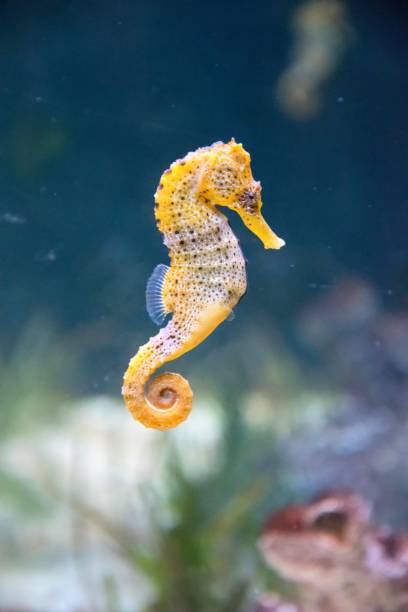The Enigmatic World of Seahorse Courtship
Dive into the mesmerizing underwater ballet of seahorse romance, where gender roles are reversed and elaborate courtship rituals unfold. These peculiar creatures, with their horse-like heads and prehensile tails, captivate marine enthusiasts and scientists alike with their unique approach to love and reproduction. From daily dances to male pregnancy, seahorse courtship challenges our understanding of animal behavior and offers a fascinating glimpse into the diversity of nature's mating strategies.

The Daily Dance: A Ritual of Love
Every morning, as the sun’s rays begin to penetrate the water’s surface, seahorse pairs engage in a mesmerizing ritual known as the daily dance. This choreographed performance serves multiple purposes: it strengthens the bond between mates, synchronizes reproductive cycles, and reaffirms the pair’s commitment to each other. During this dance, seahorses intertwine their tails, change colors in unison, and pirouette around one another in a graceful underwater ballet. The dance can last anywhere from several minutes to over an hour, depending on the species and individual preferences.
Color-Changing Courtship: A Visual Spectacle
One of the most striking aspects of seahorse courtship is the dramatic color changes that occur during the mating process. Many seahorse species possess the ability to rapidly alter their coloration, a trait known as physiological color change. During courtship, males often display vibrant hues to attract females and signal their fitness as potential mates. These color changes can range from subtle shifts in pattern to dramatic transformations, with some species exhibiting neon-like glows or intricate patterns that seem to ripple across their bodies.
The Role Reversal: Male Pregnancy
Perhaps the most extraordinary feature of seahorse reproduction is the phenomenon of male pregnancy. After an elaborate courtship, the female transfers her eggs to the male’s specialized brood pouch, where fertilization occurs. The male then carries the developing embryos for several weeks, providing them with oxygen and nutrients through a placenta-like structure. This unique adaptation allows for greater protection of the offspring and ensures a higher survival rate for the young seahorses. The gestation period varies among species, typically ranging from two to four weeks.
Monogamy and Long-Term Bonding
Unlike many fish species that engage in promiscuous mating behaviors, seahorses are known for their tendency towards monogamy. Many seahorse pairs form long-term bonds, remaining faithful to their chosen mate for an entire breeding season or even for life. This monogamous behavior is thought to be an adaptation to their unique reproductive strategy, as it ensures a consistent and reliable partner for the energy-intensive process of male pregnancy. The daily dances and frequent interactions between mates help maintain these strong pair bonds throughout the breeding season.
Conservation Implications of Seahorse Courtship
Understanding the intricacies of seahorse courtship and reproduction is crucial for conservation efforts. Many seahorse species are threatened by habitat destruction, overfishing, and the aquarium trade. Their low population density, slow reproduction rate, and specific habitat requirements make them particularly vulnerable to environmental changes. Conservation strategies that take into account the unique mating behaviors and reproductive cycles of seahorses are essential for protecting these fascinating creatures and maintaining the delicate balance of marine ecosystems.
As we continue to unravel the mysteries of seahorse courtship, we gain not only a deeper appreciation for the diversity of life in our oceans but also valuable insights into the evolution of reproductive strategies. The elaborate dances, color changes, and role reversals observed in seahorse mating behaviors challenge our preconceptions about gender roles in nature and highlight the remarkable adaptations that can arise through the process of natural selection. By studying and protecting these enchanting creatures, we not only preserve a unique piece of marine biodiversity but also open new avenues for understanding the complexity and beauty of life beneath the waves.





